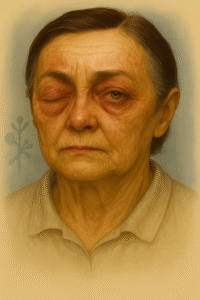Cicatricial Pemphigoid is a rare chronic autoimmune disease that causes blistering and scarring of mucous membranes, particularly in the mouth, eyes, throat, nose, and genitals. In some cases, the skin may also be affected.
Over time, repeated blistering and inflammation can lead to permanent scarring—especially in the eyes, where it may cause vision loss if untreated.

